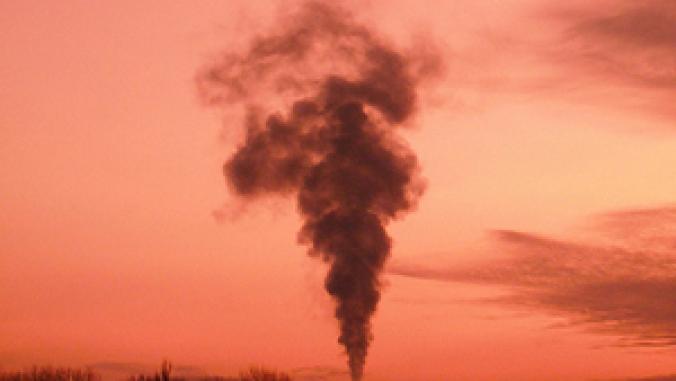Emissions in 2008 Well Below RGGI Cap: Report
Greenhouse gas emissions in the Northeast this year could ring in about 16 percent lower than the emissions cap set in the Regional Greenhouse Gas Initiative, according to nonprofit Environment Northeast. Strong demand for allowances are expected in the second auction Wednesday.

Greenhouse gas emissions in the Northeast this year could ring in about 16 percent lower than the emissions cap set in the Regional Greenhouse Gas Initiative (RGGI), according to a nonprofit.
Lower electricity consumption, the economic slowdown, higher energy prices earlier this year and greater non-fossil fuel generation caused emissions to drop. But with today's energy costs falling through the floor, Environment Northeast (ENE) warned the low emissions may not last.
"When RGGI was negotiated, everyone thought the business as usual emissions trends would be up," Derek Murrow, ENE's director of policy, said in a statement Monday. "What we're seeing, very clearly, is that emissions can decline significantly when the price of dirty fossil fuels goes through the roof and electricity consumption remains stable."
Critics have complained that the RGGI cap is set too high to achieve real emissions reductions. Others say RGGI's value is the experience it will give generators participating in a cap-and-trade without creating a shock for an already fragile economy. Lower emissions are a good thing, the report said, and could enable RGGI states to lower the cap more quickly in future compliance periods.
More than 200 electricity generators will participate in RGGI, which is the country's first mandatory greenhouse gas cap-and-trade program and goes into effect Jan. 1. The 10 participating states include Connecticut, Delaware, Maine, Maryland, Massachusetts, New Hampshire, New Jersey, New York, Rhode Island and Vermont.
The report, "RGGI Emissions Trends and the Second Allowance Auction," predicts demand for allowances in Wednesday's auction will remain healthy following what many consider to be a successful first auction in late September, which raised nearly $38.6 million. Electricity generators bought more than 80 percent of the allowances in the first auction. All states will participate in the upcoming auction in which 31.5 million allowances will be sold. Though demand is forecast to be strong, the credit crunch and volatile financial markets could also influence the auction.
The report noted that emissions have stabilized in the Northeast in recent in years despite economic growth, suggesting that economic growth may not always lead to higher emissions. High oil and coal prices made natural gas a cheaper, more attractive alternative but the recent drop in oil and coal prices could reverse this trend and lead to higher emissions. Meanwhile, electricity generation from low-carbon sources such as hydro, wind and nuclear grew 10 percent between 2001 and 2007.




